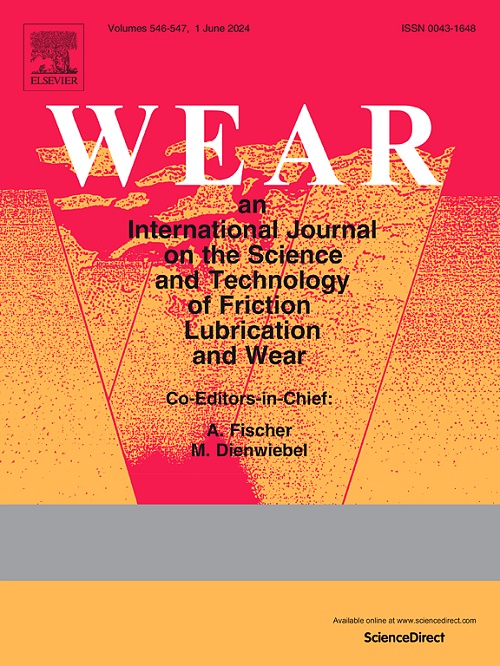Effect of carbon black properties on cut and chip wear of natural rubber
IF 5.3
1区 工程技术
Q1 ENGINEERING, MECHANICAL
引用次数: 0
Abstract
The effect of carbon black colloidal properties on cut and chip wear of natural rubber compounds is investigated across a wide range of applied impact normal forces using an Instrumented Cut and Chip Analyzer (ICCA). The objective of the study is to determine the basic fatigue and fracture mechanisms that drive cut and chip wear. Natural rubber compounds reinforced with eight different carbon blacks varying in structure and surface area are studied. The loading of the carbon blacks in the rubber compounds is fixed at 50 parts per hundred rubber (phr). The cut and chip performance strongly correlates to both the carbon black morphological properties and the resulting compound mechanical and fracture properties. The cut and chip performance also depends on the applied impact normal force level. At low forces, high structure carbon blacks result in compounds which are stiffer and deflect less under the applied impact normal forces and minimize cut and chip wear. At high forces, low structure carbon black compounds, which are softer and more readily able to crystallize under force-controlled deflection, minimize cut and chip wear. It is argued that at low applied impact normal forces, the cut and chip behavior is dominated by a force-controlled fatigue crack growth mechanism which transitions to a critical tearing energy dominated mechanism at high applied impact normal forces. It is therefore important to understand the severity of application to select optimum compound properties such as the carbon black type to minimize cut and chip wear in application.
求助全文
约1分钟内获得全文
求助全文
来源期刊

Wear
工程技术-材料科学:综合
CiteScore
8.80
自引率
8.00%
发文量
280
审稿时长
47 days
期刊介绍:
Wear journal is dedicated to the advancement of basic and applied knowledge concerning the nature of wear of materials. Broadly, topics of interest range from development of fundamental understanding of the mechanisms of wear to innovative solutions to practical engineering problems. Authors of experimental studies are expected to comment on the repeatability of the data, and whenever possible, conduct multiple measurements under similar testing conditions. Further, Wear embraces the highest standards of professional ethics, and the detection of matching content, either in written or graphical form, from other publications by the current authors or by others, may result in rejection.
 求助内容:
求助内容: 应助结果提醒方式:
应助结果提醒方式:


